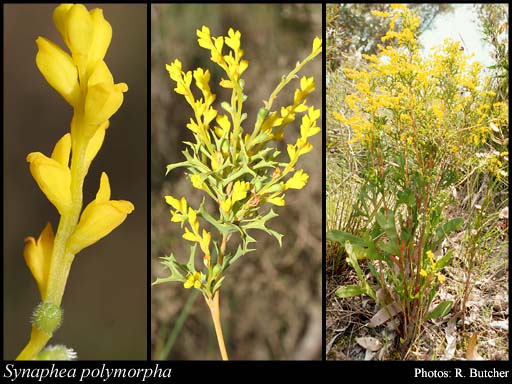- Reference
- Trans.Linn.Soc.London 10:156 (1810)
- Conservation Code
- Not threatened
- Naturalised Status
- Native to Western Australia
- Name Status
- Current
Slender or rounded shrub, 0.15-0.7 m high. Fl. yellow, Aug to Nov. White or peaty sand, sandy clay, laterite. Hillslopes, swamps.

Scientific Description
Shrubs; branchlets hairy. Leaves alternate, 30-80 mm long, glabrous; petiole glabrous; lamina flat, once divided or twice or more divided, pinnately divided or tripartitely divided, shallowly divided or deeply divided; distance from base of leaf to lowest lobe 10-20 mm; terminal leaf lobe 4-10 mm long, 1-5 mm wide; lowest lobes 15-35 mm long. Inflorescences yellow; scape 40-80 mm long; floral bracts 2.5-3.5 mm long. Perianth 6-7.5 mm long, hairy; adaxial tepal 6-7.5 mm long; abaxial tepal 5-5.5 mm long; ovary hairy, style glabrous; style including stigmatic disc 4.5-5 mm long, strongly concave; stigma 2 mm long, 1 mm wide. Follicles 4.5-5 mm long. Flowers in August, September, October or November. Occurs in the South-west (SW) Botanical Province(s), in the Jarrah Forest (JF), Warren (WAR) or Esperance Plains (ESP) IBRA subregion(s).
Distribution
- IBRA Regions
- Esperance Plains, Jarrah Forest, Swan Coastal Plain, Warren.
- IBRA Subregions
- Fitzgerald, Perth, Southern Jarrah Forest, Warren.
- IMCRA Regions
- WA South Coast.
- Local Government Areas (LGAs)
- Albany, Cranbrook, Denmark, Plantagenet, Ravensthorpe, Wanneroo.